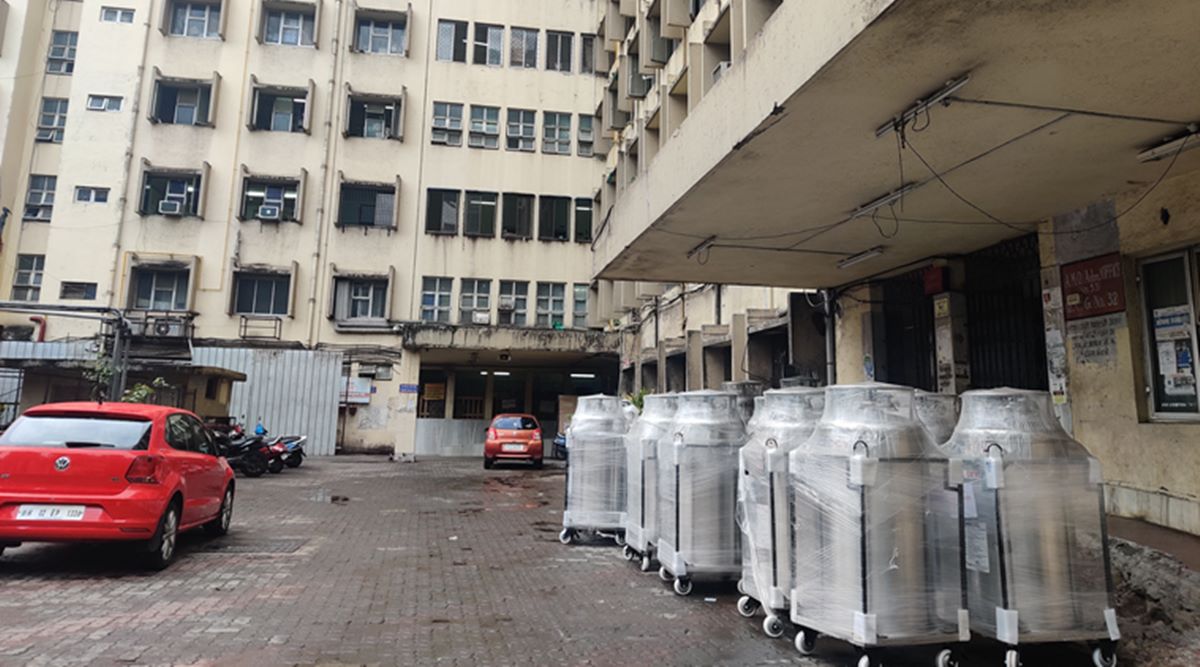 At the weekly briefing on the pandemic, Health Secretary Rajesh Bhushan said five decisions had been taken on the issue of oxygen supply. (Express photo)
At the weekly briefing on the pandemic, Health Secretary Rajesh Bhushan said five decisions had been taken on the issue of oxygen supply. (Express photo)The Centre has identified three major “problem areas” in the management of oxygen inventory and clinical management of patients on oxygen support, which resulted in poor availability of oxygen, especially in big states with high Covid-19 caseloads, The Indian Express has learnt.
Over the past week, the Centre has held multiple meetings with states about the availability of oxygen.
A senior central official who is part of the empowered committee that met with state officials said that the number of patients requiring oxygen support has gone up by almost 1 percentage point over the last 45 days. At the same time, discrepancies in inventory management had led to a shortage of oxygen supply, sources said.
“Forty-five days back, around 5.8 per cent of active cases required oxygen support; now around 6.5 per cent do. This is not a very significant increase, even though on a large base it does makes a difference. However, even with 6.5 per cent, there is sufficient headroom, and there is capacity that is available,” the senior official said.
The first of the “problem areas” in the supply of oxygen identified by the central government has to do with the “less than efficient management of inventory at the level of hospitals”, sources said.
“The states have been directed to address this,” they said.
“The hospitals have to estimate the (numbers of) mild cases; out of these mild cases, they should have estimates on how many require oxygen, because the clinical management recommends that mild patients sleep in a prone position (flat on their chest) to ensure oxygen levels,” said the senior official.
“We told them (states) that hospitals should also have estimates of moderate cases, and of how many within this category are on oxygen at more than 10-11 litres per minute. The clinical management protocol does not recommend oxygen at a flow of more than 11 litres per minute for moderate cases. The states were not doing this, and we had to draw their attention to these granular aspects,” the source said.
Second, the source said, was “the knee jerk panic reaction by states when they reported a high number of cases for two-three consecutive days”. In these situations, “we noticed that states stopped the movement of oxygen to other states,” the source said.
There are two kinds of oxygen-supply agreements, the sources said. “One in which the state and bigger hospital chains have an agreement with a manufacturer; two, where the agreement is with bottlers. The liquid oxygen tankers deliver to bottlers, who deliver this in cylinders. During the panic reaction, these were not getting delivered from one state to another. We have now stopped this; the advisory says that it is an essential public health good, and no state can restrict its movement,” they said.
The third issue concerns the length of time for which patients are required to be on oxygen, the sources said.
“According to the clinical management protocol, the moment a patient reaches a saturation level of 95, they should be taken off oxygen. It doesn’t make a difference if the patient’s saturation level is the range of 95-99. However, treating doctors are trying to achieve a 100 per cent saturation level. Over video conference, it was emphasised that achieving 100 per cent was not the idea, and the oxygen has to be unhooked the moment 95 per cent is achieved,” a source said.
At the weekly briefing on the pandemic, Health Secretary Rajesh Bhushan said five decisions had been taken on the issue of oxygen supply.
“First, there will be unrestricted and unhindered transpiration of oxygen, both interstate, and intrastate. Second, oxygen tankers will be permitted to move freely within city limits in the day time,” he said.
“Third, the Health Ministry has set up an inter-ministerial control room, where states can inform their problems on a real-time basis. The states have also been asked to set up control at the state level to monitor the districts.
“Fourth (decision) is regarding the micro-level management of rational use of oxygen. And fifth, the states have been directed to keep a watch on hoarding and overcharging, so that legal action can be taken,” Bhushan said.
📣 The Indian Express is now on Telegram. Click here to join our channel (@indianexpress) and stay updated with the latest headlines
For all the latest India News, download Indian Express App.